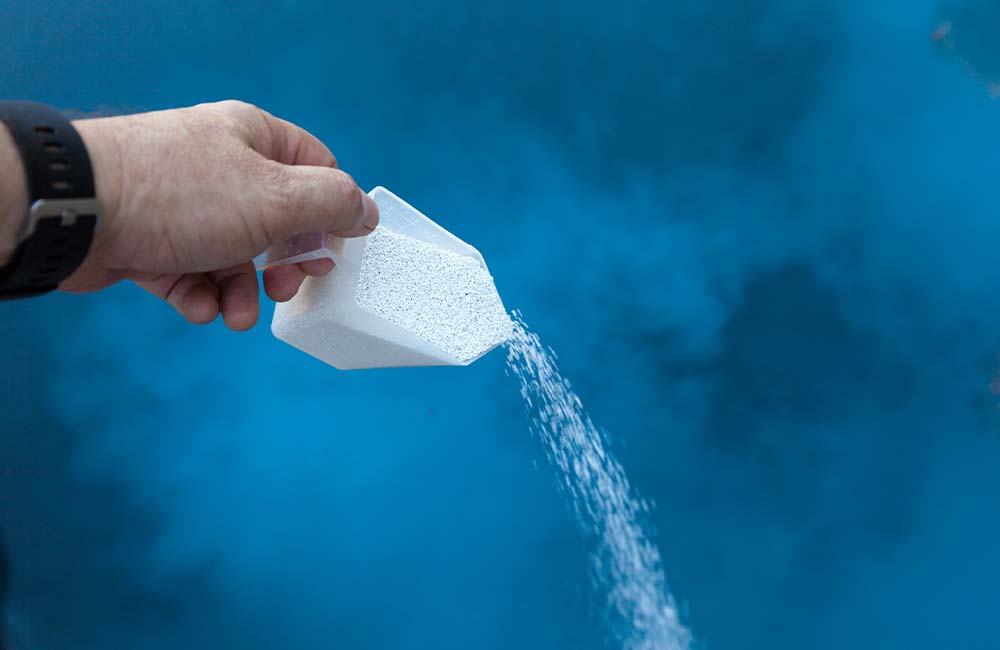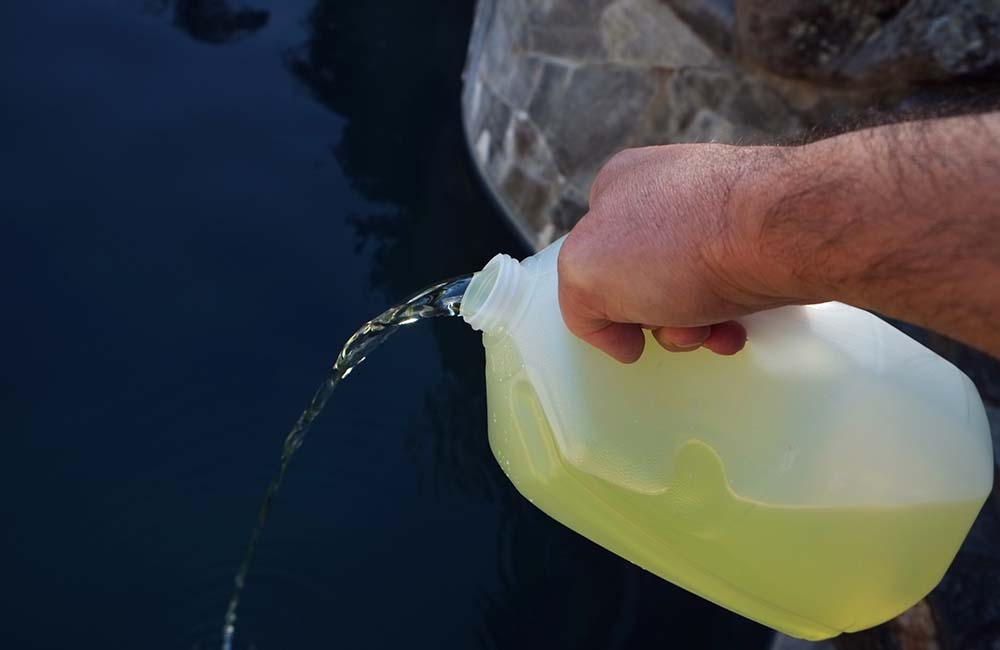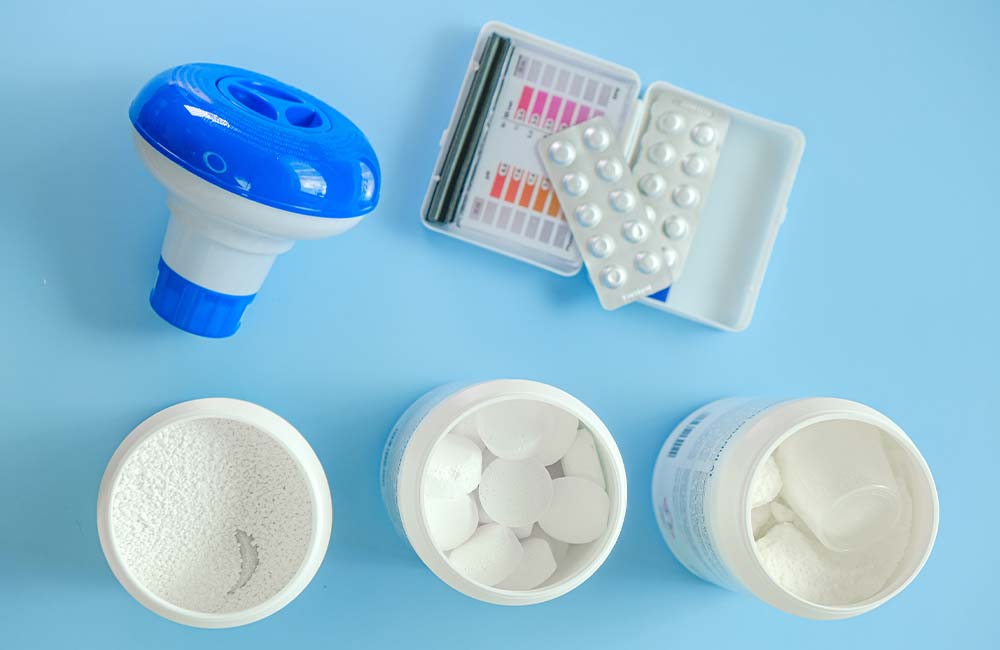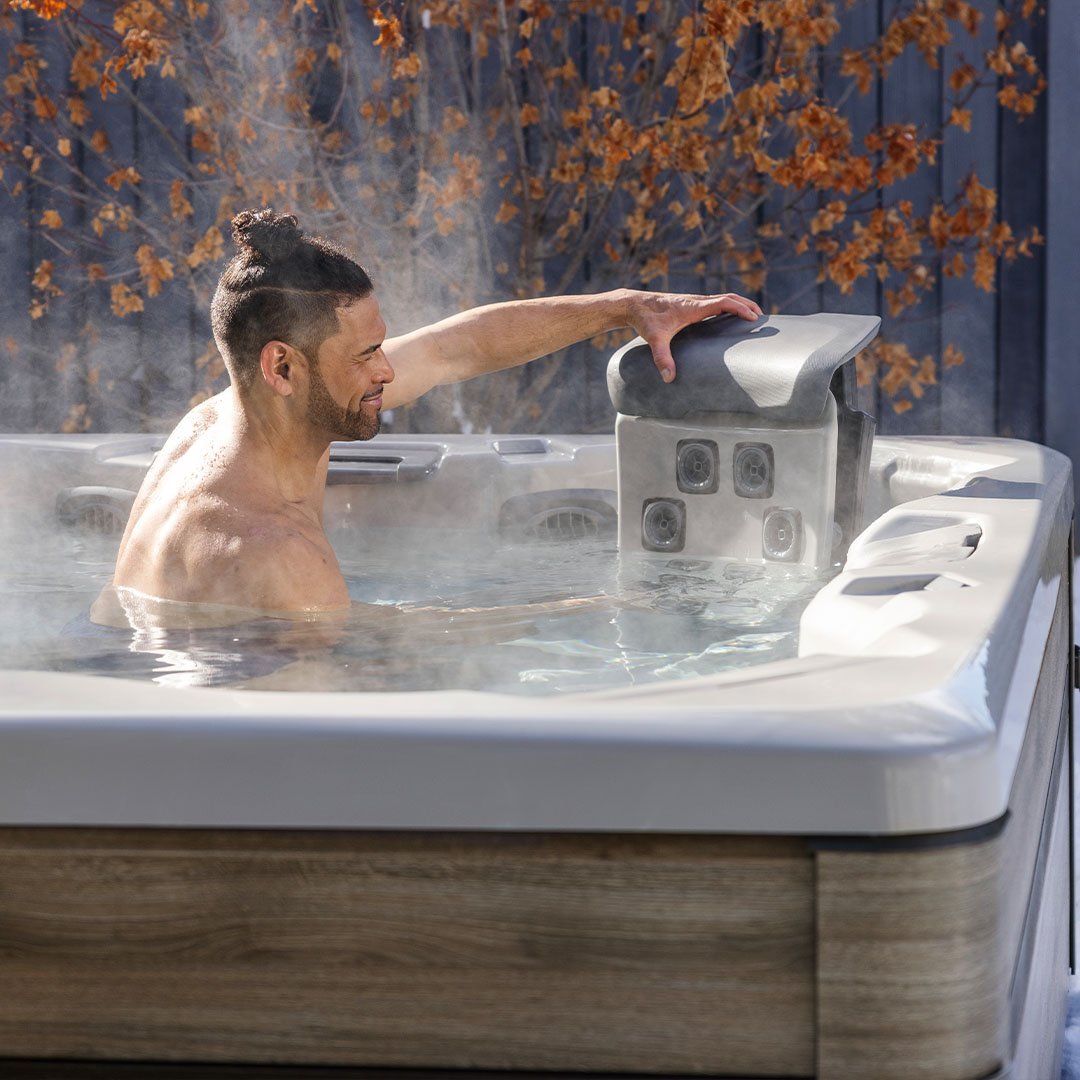Knowing the Perfect Time to Shock Your Pool: Ultimate Guide
Welcome to our comprehensive guide on pool shocking - a crucial aspect of maintaining your swimming pool’s health and hygiene. Whether you're a new pool owner or looking to refine your pool care routine, understanding the 'why,' 'how,' and 'when' of pool shocking is essential. So, let's dive in!
What Is Pool Shocking?
At its core, pool shocking is the process of adding chemicals to your pool water to break down organic contaminants, kill bacteria, and combat algae growth. Think of it as a hard reset for your pool, ensuring the water remains clean, clear, and safe for everyone to enjoy. It's not just about adding chlorine; pool shocking involves a potent mix of chemicals designed to restore and maintain the delicate balance of your pool's ecosystem.
But why is it called "shocking"? This term comes from the idea of giving your pool a sudden and intense boost of sanitizing chemicals, far above normal levels. It's a jolt to your pool's system, eliminating harmful contaminants and resetting the chemical balance.
Understanding Different Types of Pool Shock
When it comes to pool maintenance, understanding the various types of pool shock treatments available is essential for ensuring a clean and healthy swimming environment. Each type of shock has its unique characteristics and uses, making it important to choose the right one for your pool's specific needs.
Types of Pool Shock
-
Calcium Hypochlorite Shock: Often simply referred to as 'cal hypo,' this is a popular shock treatment due to its high chlorine content and effectiveness against algae. It's ideal for regular maintenance but requires dissolving in water before use to prevent bleaching of pool surfaces.
-
Dichlor Shock: Dichlor shock contains cyanuric acid, which protects chlorine from sunlight degradation. This makes it a good option for outdoor pools but can increase cyanuric acid levels over time.
-
Non-Chlorine Shock (Potassium Peroxymonosulfate): This type of shock oxidizes contaminants without increasing chlorine levels. It's fast-acting and allows for swimming shortly after treatment, making it a convenient option for quick maintenance.
-
Liquid Chlorine Shock: Liquid chlorine is a straightforward, economical choice for shocking pools, especially larger ones. It's easy to apply and effective for quickly raising chlorine levels.
Choosing the Right Shock
Selecting the right type of shock depends on various factors, including your pool's exposure to sunlight, the current chemical balance, and how quickly you need to use the pool after treatment. Each type has its benefits and situations where it's most effective.
For those particularly interested in using liquid chlorine for pool shocking, we have a comprehensive guide that dives deep into the process, benefits, and best practices. Whether you're a new pool owner or an experienced one looking to switch to liquid chlorine, our detailed guide provides valuable insights and practical tips.
How Often Should I Shock My Pool?
The frequency of shocking your pool largely depends on usage and environmental factors. As a general rule, it's advisable to shock your pool once every week during the active swimming season. This routine helps maintain clear water and prevent algae and bacteria growth. However, if your pool sees heavy use, or after events like pool parties, an additional shock treatment can be beneficial.
External factors like weather also play a role. Heavy rain, intense heat, or a lot of swimmers can introduce more contaminants, necessitating more frequent shock treatments. Always look for signs like cloudy water or a strong chlorine smell as indicators that your pool might need an extra shock. Remember, regular water testing is the best way to keep track of when it's time to shock.
Why Timing is Everything
Timing is not just a detail; it's a critical factor in the effectiveness of pool shocking. Shock your pool at the wrong time, and you might as well be pouring those chemicals down the drain. But when done correctly, it ensures maximum efficiency in purifying your pool water.
Consider this: the sun's UV rays can quickly diminish the strength of chlorine - the primary chemical used in the shocking process. Therefore, shocking your pool during the day can lead to a significant waste of both chemicals and effort. On the other hand, performing this task at the right time can drastically enhance its effectiveness, making your pool a safe and enjoyable environment for everyone.
In this guide, we'll explore all these aspects in detail. From the tell-tale signs that it's time to shock your pool, to the step-by-step process, and even the common mistakes to avoid, we've got you covered. So, whether you’re looking to prepare for a season full of poolside fun or maintain your oasis all year round, keep reading to become a pool shocking pro!
Indicators for Pool Shocking
Understanding when your pool needs shocking is crucial for maintaining its health and clarity. Here are some key indicators to watch out for:
1. Cloudy Water: One of the most common signs that your pool requires a shock treatment is when the water loses its crystal-clear appearance, becoming cloudy or murky. This cloudiness is often caused by bacteria and microorganisms that aren't effectively being neutralized by the existing chlorine levels.
2. Strong Chlorine Smell: Ironically, a strong chlorine smell doesn't mean there's too much chlorine. Instead, it indicates the presence of chloramines, compounds formed when chlorine combines with contaminants like sweat, oils, and urine. High levels of chloramines can irritate the skin and eyes and are a clear signal that your pool needs shocking to break these compounds down.
3. Visible Algae Growth: The appearance of algae in your pool, visible as green, yellow, or black spots on pool surfaces, is a definite sign that your pool chemistry is imbalanced. Algae thrive in pools where chlorine levels are too low to keep them in check, indicating that it's time for a shock treatment.
Testing Chemical Balance Regular testing of your pool's water is essential to determine the need for shocking. Here's how you can do it:
- Use a Test Kit: Pool test kits are available in digital formats or as manual kits with reagents and test strips. These kits can measure chlorine levels, pH, alkalinity, and other important parameters.
- Interpreting Results: The ideal chlorine level should be between 1 and 3 parts per million (ppm), and the pH level should be between 7.2 and 7.6. If chlorine levels are too low or the pH is off balance, it’s likely time to shock your pool.
- Frequency of Testing: During peak usage, test your pool water at least twice a week. In periods of lower usage, once a week should suffice.
By staying vigilant for these indicators and regularly testing your pool’s water, you can ensure that you shock your pool at the right time, maintaining a clean, healthy, and enjoyable swimming environment.
What Is The Best Time of Day for Pool Shocking?
The effectiveness of shocking your pool can be significantly influenced by the time of day you choose to do it. To ensure maximum efficiency of the pool shock treatment, timing is key.
1. Evening or Nighttime is Ideal: The best time to shock your pool is in the evening or at night. Why? The answer lies in the sun’s UV rays. Chlorine, a primary component in most pool shock products, can be quickly degraded by sunlight. When you shock during the daytime, the sun's UV rays can reduce the effectiveness of chlorine before it has a chance to do its job thoroughly.
2. Reduced Sunlight Exposure: By shocking your pool when the sun is down, you minimize the chlorine's exposure to UV rays. This allows the chlorine to stay active longer, giving it ample time to sanitize your pool thoroughly. It can work through the night to break down contaminants, bacteria, and algae, ensuring that by morning, your pool water is clean and clear.
3. Pool Usage Considerations: Another advantage of shocking your pool in the evening is that it's typically a time when the pool is not in use. Most people prefer not to swim at night, which works perfectly as avoiding swimming immediately after a shock treatment is recommended. Depending on the type of shock product you use, you might need to wait anywhere from 8 to 24 hours before it's safe to swim again. Doing this process at night means less disruption to your swimming schedule.
4. Regular Routine: Establishing a routine can also be beneficial. If you decide to shock your pool weekly, pick a specific day of the week and a time in the evening to do it. This consistency will not only make it easier to remember to perform this important maintenance task but also ensure that the pool is regularly treated, which is key for maintaining a clean and safe swimming environment.
In summary, the best time to shock your pool is during the evening or night hours. This timing maximizes the effectiveness of the shock treatment, ensures safety for swimmers, and fits conveniently into most pool usage schedules.
Step-by-Step Guide to Shocking Your Pool
Shocking your pool is a critical part of maintaining a clean, safe, and enjoyable swimming environment. Here's a simple yet comprehensive step-by-step guide to ensure you do it correctly and safely:
1. Safety First
- Wear Protective Gear: Before starting, wear safety goggles and gloves to protect your eyes and skin from the chemicals.
- Read Instructions: Carefully read and follow the instructions on the pool shock product. Different products may have specific requirements.
- Check the Chemical Levels: Use a pool testing kit to check the pH, chlorine, and other chemical levels in your pool. This will help you determine the right amount of shock to use.
3. Prepare the Shock Treatment
- Dilute the Shock (if required): Some shock treatments need to be diluted in water before being added to the pool. If so, fill a 5-gallon bucket with water and add the shock to the bucket (not the other way around).
4. Turn on Your Pool’s Filter
- Circulation is Key: Ensure your pool’s filter system is running to help circulate the chemicals evenly throughout the pool.
5. Add the Shock to the Pool
- Even Distribution: Slowly pour the shock mixture into the pool, walking around the perimeter to distribute it evenly. For granular shock, sprinkle it across the pool’s surface.
6. Allow the Shock to Work
- Wait and Let it Circulate: Allow the shock to circulate in the pool for at least 6-8 hours (or as recommended by the product instructions). It’s best to do this overnight when the pool is not in use.
7. Re-test and Balance Pool Water
- Check Chemical Levels Again: After the waiting period, re-test the water. The chlorine levels should be back to normal (1-3 ppm), and the pH should be balanced.
- Adjust if Necessary: If the levels are still off, adjust them using appropriate pool chemicals.
8. Safe to Swim
- Check Chlorine Levels: Ensure that chlorine levels have returned to a safe range (typically 1-3 ppm) before allowing swimming.
- Look for Clarity: The water should be clear, with no visible algae or cloudiness.
9. Regular Maintenance
- Keep a Routine: Regular maintenance, including routine shocking, is key to keeping your pool in top condition.
By following these steps, you can effectively shock your pool, ensuring it remains a safe and enjoyable place for everyone. Remember, regular care and maintenance are the secrets to a healthy pool.
Common Mistakes to Avoid When Shocking Your Pool
Shocking your pool is a straightforward process, but it's easy to make mistakes, especially if you're new to pool maintenance. Being aware of these common errors can help ensure that you shock your pool effectively and safely.
1. Not Wearing Protective Gear
- Risk: Handling pool chemicals without protective gloves and goggles can lead to skin irritation and eye damage.
- Solution: Always wear appropriate safety equipment when handling pool shock and other chemicals.
2. Adding Water to Chemicals
- Risk: Adding water directly to pool chemicals, particularly shock, can cause a dangerous reaction.
- Solution: Always add chemicals to water, not the other way around. This helps in diluting the chemicals safely.
3. Shocking During the Day
- Risk: UV rays from the sun can quickly degrade chlorine, reducing the effectiveness of the shock.
- Solution: Shock your pool in the evening or at night to ensure maximum efficiency of the chlorine.
4. Not Testing Water Before and After
- Risk: Failing to test the water can lead to improper chemical balance, which can be ineffective or even harmful.
- Solution: Use a reliable testing kit to check your pool’s chemical levels before and after shocking to ensure proper balance.
5. Immediately Swimming After Shocking
- Risk: Entering the pool too soon after shocking can expose swimmers to high levels of chlorine, leading to skin and eye irritation.
- Solution: Wait until the chlorine level drops back to a safe range (typically 1-3 ppm) before swimming again.
6. Incorrectly Measuring Chemicals
- Risk: Using too much or too little shock can be ineffective or can damage the pool.
- Solution: Carefully follow the manufacturer's instructions for the correct amount of shock based on your pool’s volume.
7. Forgetting to Run the Filter
- Risk: Not running your pool's filter system during and after shocking can lead to uneven distribution of chemicals.
- Solution: Ensure your pool’s filter system is running to help circulate the shock treatment evenly throughout the pool.
8. Ignoring Weather Conditions
- Risk: Shocking right before a rainstorm or in windy conditions can alter the effectiveness of the treatment.
- Solution: Check the weather forecast and choose a calm, clear day or night for shocking your pool.
9. Neglecting Regular Maintenance
- Risk: Sporadic pool care can lead to bigger problems requiring more extensive and costly treatments.
- Solution: Adhere to a regular maintenance schedule, including routine shocking, to keep your pool in optimal condition.
By avoiding these common mistakes, you can ensure that your pool shocking process is safe, effective, and contributes to the longevity and enjoyment of your pool.
FAQ'S
Can I Shock My Pool Too Much?
Answer: Yes, over-shocking your pool can lead to high chlorine levels that can damage pool surfaces, equipment, and even cause skin and eye irritation for swimmers. It's important to follow the manufacturer's instructions for the correct amount of shock based on your pool's volume and to test the water before and after shocking to ensure proper chemical balance.
How Long Should I Wait to Swim After Shocking My Pool?
Answer: The waiting time before swimming after shocking your pool varies depending on the type of shock product used. Generally, it's safe to swim once the chlorine levels return to the safe range of 1-3 ppm, which typically takes around 8-24 hours. It's crucial to test the water to confirm that the chlorine levels have dropped to a safe range before swimming.
Can I Shock My Pool During the Day?
Answer: While you can technically shock your pool during the day, it’s not recommended due to the sun's UV rays, which can quickly degrade chlorine, reducing the effectiveness of the shock treatment. For best results, shock your pool in the evening or at night when the sun is down to ensure maximum efficiency of the chlorine.
In conclusion, understanding the ins and outs of pool shock is a vital component of maintaining a healthy and enjoyable above-ground pool. By following the guidelines outlined in this article, you can ensure your pool remains a pristine oasis for relaxation and fun. For more detailed insights into managing the chemical balance of your above-ground pool, don’t forget to visit our comprehensive guide on above ground pool chemicals.













